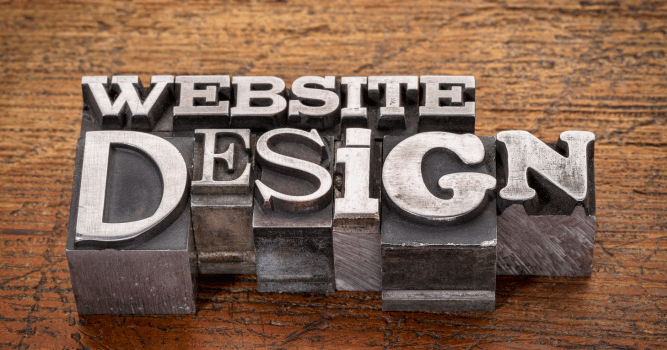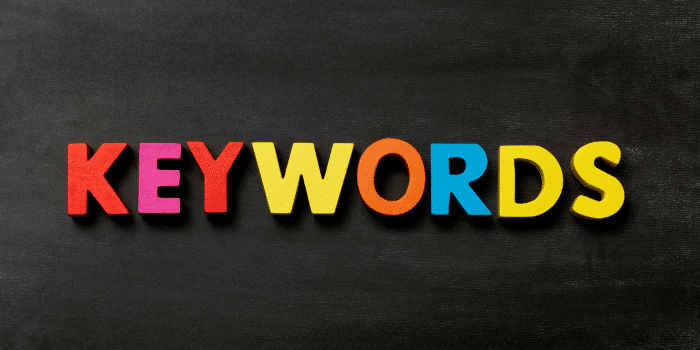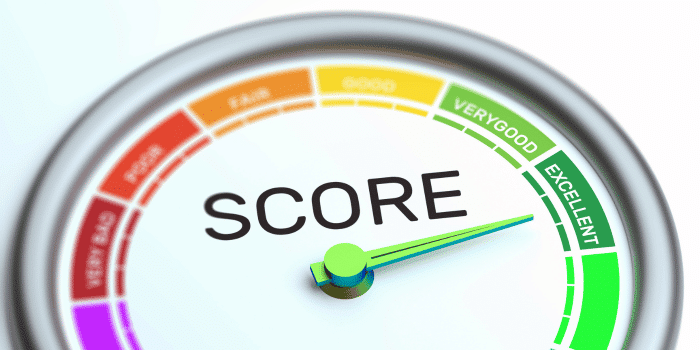Website rich media experiences have revolutionized the way users engage with online content. Incorporating videos, animations, and interactive elements into websites has become an essential addition to enhance user interactions and drive conversions. By leveraging the benefits of rich media content, companies can captivate their audience, increase brand awareness, and deliver a memorable online experience.
Website performance is crucial for maintaining visitors’ attention. Rich media experiences not only grab users’ attention but also improve the overall performance of a website by reducing bounce rates and increasing time spent on page. These engaging elements provide an effective platform for showcasing products or services in an interactive manner.
As technology continues to advance, the ability to create captivating website experiences becomes even more important for businesses across industries.
Defining Rich Media in the Digital Landscape
Rich media refers to digital content that combines various formats like images, videos, audio, and interactive elements. It goes beyond static text or images by providing a dynamic and immersive experience for website visitors. This section will delve into what rich media entails and how it enables brands to convey their message in a more engaging and memorable manner.
Engaging Content Formats
Rich media encompasses a wide range of content formats that captivate users’ attention. It includes eye-catching images that grab your gaze, compelling videos that tell stories, interactive elements like quizzes or games that encourage user participation, and even audio clips that enhance the overall experience. By incorporating these different formats into their websites, brands can create an immersive environment where visitors are actively engaged with the content.
Dynamic User Experience
One of the key benefits of rich media is its ability to provide a dynamic user experience. Rather than passively consuming information, users can interact with the content on a deeper level. For example, they can watch videos that showcase products from different angles or listen to audio testimonials from satisfied customers. This interactivity not only keeps users entertained but also helps them better understand and connect with the brand’s message.
Enhanced Brand Messaging
In today’s competitive digital landscape, standing out is crucial for any brand. Rich media allows companies to differentiate themselves by presenting their message in a visually appealing and captivating way. Instead of relying solely on text-based descriptions or static images, brands can leverage rich media features to tell their story more effectively. They can use videos to demonstrate product features or incorporate interactive elements that allow users to explore different aspects of their offerings.
Increased Engagement and Memorability
Engagement is key. Rich media plays a significant role in capturing users’ attention and keeping them engaged throughout their journey on a website. Whether it’s through visually stunning graphics or interactive elements that encourage exploration, rich media helps create an immersive experience that users are more likely to remember. By making the website experience memorable, brands can increase the chances of visitors returning in the future or sharing their positive experiences with others.
Elevate your brand with captivating rich media—contact Kha Creation today!
Benefits of Rich Media for Enhanced Engagement
Rich media experiences have become increasingly popular in the digital landscape due to their ability to captivate and engage users. With visually appealing content and interactive elements, rich media offers a host of benefits that can significantly enhance user engagement on websites.
Capture Attention Quickly
One of the primary advantages of rich media content is its ability to capture attention quickly. With eye-catching visuals, such as high-resolution images, videos, or animations, rich media elements stand out from traditional text-based content. This visual appeal immediately grabs the user’s attention and entices them to explore further.
For example, imagine you’re browsing a website that showcases a product through a captivating video demonstration. The engaging visuals and dynamic storytelling instantly draw you in, making you more likely to stay on the page and learn more about the product.
Encourage Active Participation
Another key benefit of rich media is its ability to encourage active participation from users. Unlike static content, rich media often includes interactive elements like quizzes, surveys, or games that prompt users to actively engage with the content.
By incorporating these interactive features into your website’s rich media experiences, you create an immersive environment where users feel compelled to participate and explore further. This active involvement not only increases engagement but also creates a sense of ownership and connection with your brand or message.
Increase Engagement Metrics
The enhanced engagement resulting from rich media experiences translates into tangible benefits for your website metrics. When users are captivated by visually appealing content and encouraged to actively participate, they tend to spend more time on your site. Longer website visits provide additional opportunities for them to absorb information or make purchasing decisions.
Moreover, increased engagement with rich media often leads to higher click-through rates (CTRs). Users who are genuinely interested in exploring further are more likely to click on relevant links or calls-to-action within your content. This heightened CTR can drive traffic deeper into your website or guide users towards desired actions, such as signing up for a newsletter or making a purchase.
Furthermore, the improved engagement and CTRs associated with rich media experiences can contribute to higher conversion rates. When users are actively engaged and spend more time on your site, they are more likely to convert into leads or customers.
Key Rich Media Formats for Captivating Audiences

Video content is undoubtedly one of the most popular and effective forms of rich media. With videos, you have the power to tell a story through visuals and sound, creating an immersive experience for your viewers. Whether it’s a tutorial, product demonstration, or brand storytelling, videos can capture attention and leave a lasting impact.
Infographics are another powerful format that presents complex information in a visually digestible way. They combine text, images, charts, and graphs to simplify data and make it easy to understand. Infographics are perfect for conveying statistics, research findings, or any information that requires visual representation. By condensing information into bite-sized chunks with eye-catching visuals, infographics can engage readers and enhance their understanding of the subject matter.
Slideshows or image carousels offer an interactive way to showcase multiple products or features on your website. Instead of bombarding visitors with static images one after another, slideshows allow them to navigate through different slides at their own pace. This format is especially useful if you have various products or services that you want to highlight without overwhelming your audience. Slideshows provide a dynamic and engaging experience that keeps visitors hooked as they explore what you have to offer.
Podcasts have gained immense popularity in recent years due to their convenience and accessibility. While not strictly considered “rich media” in terms of visuals, podcasts deliver rich audio content that captivates listeners’ attention. With podcasts, you can share valuable insights, interviews with experts in your industry, or even narrate stories related to your brand. The audio format allows listeners to multitask while consuming your content – they can listen during their commute or while doing household chores.
Consider the nature of your content and target audience preferences. Videos are great for storytelling and capturing attention visually, while infographics simplify complex information. Slideshows offer an interactive way to showcase multiple products or features, and podcasts provide an engaging audio experience.
Incorporating these rich media formats into your website can help you create a captivating user experience that keeps visitors coming back for more. Experiment with different formats and see what resonates best with your audience. Remember, the key is to engage and captivate your audience by delivering content in a format that appeals to their preferences.
Ready to dazzle your audience? Reach out to Kha Creation for immersive rich media solutions.
Best Practices for Creating Effective Rich Media Ads
To create website rich media experiences that captivate your audience, it’s essential to follow some best practices. By keeping the design simple yet visually striking, you can quickly grab users’ attention. A visually appealing ad will make users stop scrolling and take notice.
Fast loading times are crucial for providing a seamless user experience across different devices. Nobody likes waiting for a slow-loading ad to appear! Ensure that your rich media ads load quickly so that users can engage with them without any frustrating delays.
Incorporating clear call-to-actions (CTAs) within the ad design is another key element of an effective rich media ad. Your CTA should guide users towards the desired action, whether it’s making a purchase, signing up for a newsletter, or exploring more about your brand.
When designing display ads, video ads, or banner ads for your ad campaign, consider using creative types beyond traditional display or banner formats. Pushdown ads and lightbox ads are examples of interactive formats that allow users to engage with the content in unique ways.
Remember to optimize your ad content and format based on the platform where it will be displayed. Different platforms may have specific requirements or limitations. Adapting your creative to fit these specifications will ensure that your rich media ads look their best wherever they’re shown.
Now let’s dive into some specific tips for creating effective rich media ads:
Keep It Simple Yet Visually Striking
- Use eye-catching visuals and colors.
- Avoid cluttered designs that overwhelm the viewer.
- Focus on one main message or product feature.
- Use concise and impactful copy alongside visuals.
Ensure Fast Loading Times
- Optimize image and video files to reduce their size.
- Minimize unnecessary animations or effects that may slow down loading times.
- Test your ads on different devices and networks to ensure fast loading across various platforms.
Incorporate Clear Call-to-Actions (CTAs)
- Use compelling and action-oriented language in your CTAs.
- Place the CTA prominently within the ad design, making it easy for users to find.
- Provide a clear instruction on what action you want users to take.
By following these best practices, you can create rich media ads that effectively engage your audience and drive desired actions. Remember, simplicity and visual appeal are key, loading times should be fast, and clear call-to-actions are essential. Now go ahead and create some stunning rich media ads that leave a lasting impression!
Boosting Engagement with Interactive Rich Media Experiences
Interactive rich media experiences can significantly enhance user engagement on websites. By incorporating gamification elements like quizzes or puzzles, you can make the user experience more enjoyable and interactive. These interactive features not only entertain users but also keep them engaged for longer periods.
Personalization is another key aspect of boosting engagement with rich media content. Allowing users to customize their interactions based on their preferences creates a sense of ownership and connection. For example, providing options to choose different paths within an interactive video ad or selecting specific topics in an infographic can cater to individual interests. This customization empowers users and makes them feel more involved, resulting in higher engagement rates.
Social sharing options play a crucial role in expanding brand reach and increasing engagement. When users have the ability to share their experiences with others through social media platforms, it creates a ripple effect that amplifies brand visibility. By integrating social sharing buttons into your website’s rich media content, you encourage users to spread the word about their positive experiences, attracting new visitors and potential customers.
Engagement metrics are essential for evaluating the success of your interactive rich media experiences. Tracking metrics such as time spent interacting with creatives, click-through rates, and completion rates can provide valuable insights into user behavior and preferences. Analyzing these metrics allows you to optimize your content strategy by identifying what works well and what needs improvement.
In today’s digital environment, mobile devices play a significant role in user engagement. It is crucial to ensure that your interactive rich media experiences are optimized for mobile viewing. Responsive design techniques should be employed to adapt the content seamlessly across different screen sizes and orientations.
To illustrate the impact of interactive elements on engagement rates, consider a case study where a company implemented an expandable banner ad with gamification features on its website homepage. The ad allowed users to solve puzzles related to the company’s products while offering incentives for completing them successfully. As a result, the company witnessed a 30% increase in user engagement and a significant boost in conversions.
Experience the power of engaging content—get in touch with Kha Creation now!
Strategic Planning for Rich Media Advertising
To create website rich media experiences that truly captivate your audience, strategic planning is essential. By following these key steps, you can ensure that your rich media advertising campaigns are targeted, effective, and aligned with your brand identity.
Identify the Target Audience
The first step in strategic planning for rich media advertising is to identify your target audience. Understanding who they are and what they want will allow you to tailor your content to their preferences and interests. Conduct market research, analyze demographics and psychographics, and gather insights from customer feedback to gain a deep understanding of your target audience.
Tailor Rich Media Content
Once you have identified your target audience, the next step is to tailor your rich media content specifically for them. Consider their preferences, interests, and online behavior when designing interactive elements such as videos, animations, or games. By creating content that resonates with your audience on a personal level, you can increase engagement and drive better results.
Set Clear Objectives
To make the most of your rich media campaign, it’s crucial to set clear objectives from the outset. Determine what you want to achieve with your advertising efforts – whether it’s increasing brand awareness or driving sales – and align all aspects of your campaign towards those goals. Having clearly defined objectives will help you measure success and optimize future campaigns accordingly.
Allocate Resources Wisely
Creating high-quality rich media content requires appropriate resources in terms of time, budget, and talent. Allocate resources wisely by investing in skilled designers or agencies who specialize in creating engaging visuals and interactive experiences. Ensure that the content aligns seamlessly with your brand identity while adhering to industry standards for optimal performance across various devices.
Utilize Different Rich Media Ad Formats
Rich media ads come in various formats such as mobile ads (slider ads or interstitial ads), stream video ads (pre-roll or mid-roll), or even standard banner ads with interactive elements. Consider utilizing different formats based on your campaign objectives and the preferences of your target audience. Experiment with different formats to find what works best for your brand.
Embrace Programmatic Advertising
Programmatic advertising can significantly enhance the effectiveness of your rich media campaigns. By leveraging data-driven insights and automated technologies, programmatic advertising allows you to deliver personalized and targeted ads at scale. This approach enables you to reach the right audience, at the right time, with the right message.
Incorporating these strategic planning steps into your rich media advertising campaigns will set you up for success.
Overcoming Challenges in Rich Media Implementation
Cross-Browser Compatibility: Delivering Consistent Experiences
Ensuring cross-browser compatibility is crucial. With the multitude of devices and platforms available today, it’s essential to deliver a consistent experience for all users. This means that no matter if someone is accessing your website from their desktop computer, smartphone, or tablet, they should have the same seamless experience.
To achieve this, you need to test your rich media content across different browsers and devices. By doing so, you can identify any compatibility issues and make the necessary adjustments to ensure a smooth user experience. It’s important to remember that each browser may interpret code differently, so what works perfectly on one browser might not function as expected on another.
Optimizing File Sizes: Minimizing Loading Times
Nobody likes waiting for a webpage to load, especially. Large file sizes can significantly slow down loading times, leading to frustrated users who may abandon your site altogether. That’s why optimizing file sizes without compromising quality is essential.
One way to achieve this is by compressing images and videos used in your rich media content. There are various tools available that can help reduce file sizes while maintaining visual integrity. Consider using formats such as WebP or AVIF for images and video codecs like H.265 (HEVC) or VP9 for videos as they offer better compression capabilities without sacrificing quality.
Addressing Accessibility Issues: Inclusive Experiences for All Users
Accessibility should be a top priority when implementing rich media experiences on your website. It’s important to ensure that everyone can access and engage with your content, including visually impaired users who rely on assistive technologies like screen readers.
To address potential accessibility issues, provide alternative text descriptions or captions for visually impaired users. Alt text describes the content of an image or video and allows screen readers to convey that information to users who can’t see the visual content. Captions, on the other hand, provide text-based explanations of audio content, making it accessible to those who are deaf or hard of hearing.
By incorporating these accessibility features, you can make your rich media experiences more inclusive and reach a broader audience.
Transform your storytelling with vibrant rich media—connect with Kha Creation today!
Measuring the Impact of Rich Media on User Experience
To truly understand the impact of rich media experiences on user engagement and interaction, it is essential to track relevant metrics, conduct A/B testing, and analyze user feedback. By employing these strategies, website owners can gain valuable insights into how their audience perceives and interacts with different types of rich media content.
Track Engagement Metrics
One way to measure the impact of rich media on user experience is by tracking various engagement metrics. Metrics such as time spent on page, click-through rates (CTR), and conversion rates provide valuable information about how users are interacting with the content. For example, a longer average time spent on a page may indicate that users are more engaged with the rich media elements present. Similarly, a higher CTR suggests that users find the content compelling enough to take action. By regularly monitoring these metrics, website owners can gauge the effectiveness of their rich media experiences in capturing and retaining user attention.
Conduct A/B Testing
A/B testing is another effective method for measuring the impact of different variations of rich media content on user experience. By creating multiple versions of a webpage or ad campaign with varying forms or placements of rich media elements, website owners can compare performance data to determine which version leads to better user engagement and conversion rates. For instance, they can test different formats like videos versus static images or experiment with placement positions such as above-the-fold versus below-the-fold. This approach allows for data-driven decision-making when optimizing rich media experiences for maximum impact.
Analyze User Feedback
While quantitative metrics provide valuable insights into user behavior, analyzing qualitative feedback from users is equally important. Surveys or comments allow website owners to gather direct feedback from their audience regarding their perception and interaction with rich media experiences. Users may share preferences for specific types of content or provide suggestions for improvement. This feedback can help guide future iterations and enhancements to ensure a positive user experience.
By combining quantitative metrics and qualitative feedback, website owners can gain a comprehensive understanding of how users perceive and interact with rich media experiences. This information can then be used to make informed decisions about content creation, design choices, and overall user experience optimization.
Conclusion
So there you have it! Rich media experiences are the key to capturing your audience’s attention and boosting engagement. By incorporating interactive elements, immersive visuals, and compelling storytelling, you can create unforgettable brand experiences that resonate with your target audience.
But it doesn’t stop there. To truly harness the power of rich media, you need to strategically plan your campaigns, overcome implementation challenges, and measure the impact on user experience. Remember, it’s not just about creating flashy ads; it’s about delivering value and creating meaningful connections with your audience.
Now that you have a solid understanding of rich media and its benefits, it’s time to put this knowledge into action. Start brainstorming ideas for your next rich media campaign, experiment with different formats and interactive features, and don’t be afraid to push the boundaries of creativity. Your audience is waiting for an experience they won’t forget!
FAQs
How can I create effective rich media experiences for my website?
To create effective rich media experiences for your website:
- Identify your target audience’s preferences.
- Choose the right mix of multimedia elements based on your content goals.
- Optimize file sizes to ensure fast loading times.
- Ensure compatibility across different devices and browsers.
- Test your rich media elements thoroughly before publishing.
- Continuously analyze user feedback and engagement metrics to refine your approach.
Take your content to the next level—contact Kha Creation for unforgettable rich media experiences.







